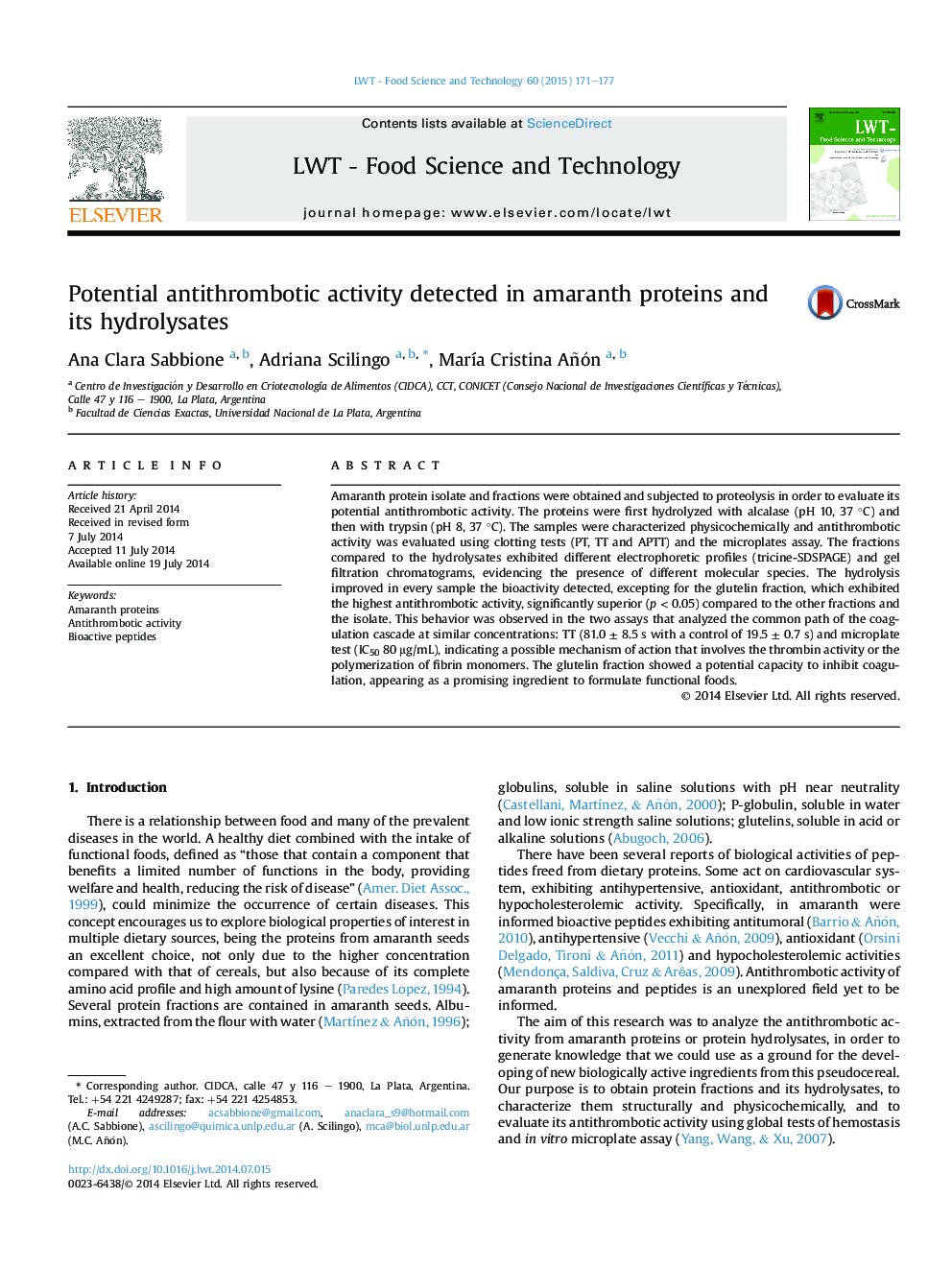| کد مقاله | کد نشریه | سال انتشار | مقاله انگلیسی | نسخه تمام متن |
|---|---|---|---|---|
| 6402832 | 1330891 | 2015 | 7 صفحه PDF | دانلود رایگان |
- Amaranth seed proteins and hydrolysates were obtained and characterized.
- Antithrombotic proteins from amaranth were detected by two different assays.
- The glutelin fraction exhibited the highest antithrombotic activity.
- Hydrolysis improved the bioactivity detected, excepting for the glutelin fraction.
Amaranth protein isolate and fractions were obtained and subjected to proteolysis in order to evaluate its potential antithrombotic activity. The proteins were first hydrolyzed with alcalase (pH 10, 37 °C) and then with trypsin (pH 8, 37 °C). The samples were characterized physicochemically and antithrombotic activity was evaluated using clotting tests (PT, TT and APTT) and the microplates assay. The fractions compared to the hydrolysates exhibited different electrophoretic profiles (tricine-SDSPAGE) and gel filtration chromatograms, evidencing the presence of different molecular species. The hydrolysis improved in every sample the bioactivity detected, excepting for the glutelin fraction, which exhibited the highest antithrombotic activity, significantly superior (p < 0.05) compared to the other fractions and the isolate. This behavior was observed in the two assays that analyzed the common path of the coagulation cascade at similar concentrations: TT (81.0 ± 8.5 s with a control of 19.5 ± 0.7 s) and microplate test (IC50 80 μg/mL), indicating a possible mechanism of action that involves the thrombin activity or the polymerization of fibrin monomers. The glutelin fraction showed a potential capacity to inhibit coagulation, appearing as a promising ingredient to formulate functional foods.
Journal: LWT - Food Science and Technology - Volume 60, Issue 1, January 2015, Pages 171-177
